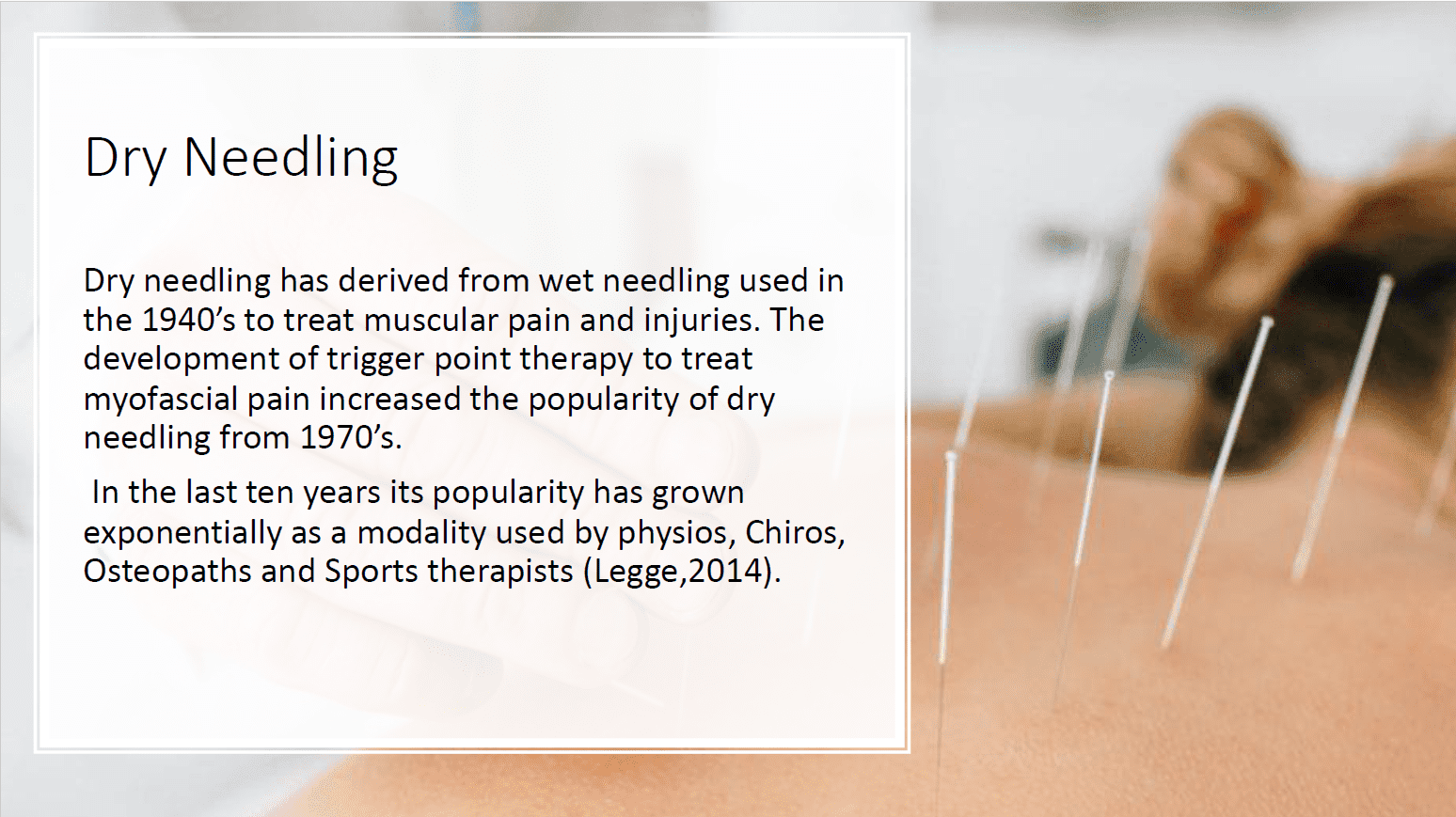How Long Does Dry Needling Last?
Dry needling is a non-invasive treatment for chronic pain that involves using needles to stimulate muscles, tendons and ligaments. It has been known to reduce discomfort, reduce inflammation, increase blood flow and loosen muscles without the use of drugs or surgery.
Physical therapists commonly utilize dry needling to address trigger points, or knotted muscles that can cause chronic pain. This procedure may be combined with other treatments like massage therapy for optimal outcomes.
How Many Sessions Will I Need?
Dry needling is a type of physical therapy often used to treat pain. It involves an experienced therapist inserting needles into specific myofascial trigger points in order to release tension and relieve discomfort.
Physical therapists may utilize this technique in addition to other treatments like massage, stretching and exercise. Usually it’s part of an overall treatment plan that addresses the underlying cause of your issue and allows for maximum healing potential.
The number of sessions necessary depends on the severity of your symptoms. Generally, people with chronic pain require more sessions than those experiencing acute discomfort.
At your first session, your therapist will identify and treat any trigger points causing pain or movement restrictions. They use a “trigger point map” to help pinpoint which areas should receive attention.
How Long Will Each Session Last?
Many patients find dry needling an effective and speedy method for relieving pain. It works by stimulating nerve fibers along your spinal cord, sending messages to your brain about where the needle was inserted.
Your therapist inserts a very fine filament needle directly into a trigger point and attempts to elicit what is known as “local twitching response,” or muscle twitches in response to needling. These twitches can help relax stiff muscles and increase blood flow.
Some people experience improvement after their first session, while others require multiple treatments to achieve optimal results. Your therapist will collaborate with you to determine the frequency of treatments that is most suitable for your requirements.
Your therapist may suggest at-home treatments like heat or ice therapy, a warm bath with Epsom salts, or other exercises to prolong the effects of your treatment. Dry needling can provide great relief from acute or chronic pain and help you feel your best.
How Often Will I Need to Come Back?
Dry needling is an effective treatment for muscle pain, stiffness and movement impairments. Physical therapists and other health professionals utilize it to address these issues.
When you come in for a dry needling session with your physical therapist, they will begin by pinpointing the trigger point that’s causing your issue. They then insert a sterile needle directly into that point and gently squeeze it to try and elicit an electrical twitch response in your muscle.
According to your trigger point condition and desired outcomes, it may take more than one session for lasting changes. Your therapist can advise on how often additional appointments should be scheduled after your initial consultation.
What Can I Expect After Each Session?
After dry needling, you may experience soreness or bruises; this is a normal response as your body works to heal. Additionally, these feelings serve as evidence that muscles are responding positively and relaxing after treatment.
Your physical therapist will identify the trigger points causing you pain and then place needles into them to stimulate them. This trigger point release technique is an efficient and secure way of relieving muscle tightness, tension, and spasms that can improve range of motion while relieving pain.
Dry needling not only relieves your pain and increases range of motion, but it can also expedite recovery time so you can get back to living the active life you love faster than with traditional methods. It helps relax muscles, reduce muscle spasms, increase blood flow to affected area and break down old patterns of pain or dysfunction so your muscles can function normally again.
If you’re interested in learning more about dry needling or scheduling an appointment, please visit our contact page to get in touch with our team of specialists.



